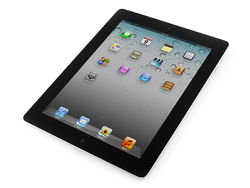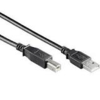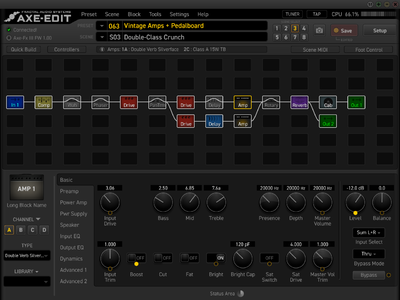Read the Owners Manual first!
Difference between revisions of "Editors"
| Line 192: | Line 192: | ||
Use the widget in the bottom left corner of the Axe-Edit / Axe-Edit III window to manage Global blocks. | Use the widget in the bottom left corner of the Axe-Edit / Axe-Edit III window to manage Global blocks. | ||
| + | |||
| + | Read this: [[Global blocks]] | ||
==Block Library== | ==Block Library== | ||
Revision as of 15:42, 15 April 2019
Contents
- 1 About Axe-Edit, Axe-Edit III, AX8-Edit and FX8-Edit
- 2 Editing on a tablet or smartphone
- 3 Connecting the editor
- 4 Syncing
- 5 Updating the editor
- 6 Configuring the editor
- 7 Using the editor
- 7.1 Noteworthy stuff
- 7.2 Keyboard shortcuts
- 7.3 Setup button
- 7.4 Configure the FC-6 and FC-12
- 7.5 Axe-Change
- 7.6 Preset Manager and Cab Manager
- 7.7 Block Info button
- 7.8 Quick-Build a preset
- 7.9 Edit a preset title
- 7.10 Change a value with small incremental/decremental steps
- 7.11 Delete a cable between blocks
- 7.12 Edit a modifier and attaching/detaching controllers
- 7.13 Reset a block
- 7.14 Swap blocks
- 7.15 Save and load internal controller settings
- 7.16 Global blocks
- 7.17 Block Library
- 7.18 Clear, initialize, refresh or revert a preset
- 7.19 Snapshots
- 7.20 Scenes
- 7.21 X/Y settings
- 7.22 Channels
About Axe-Edit, Axe-Edit III, AX8-Edit and FX8-Edit
These are the software editors for the Axe-Fx II, Axe-Fx III, AX8 and FX8. Available for Windows and Mac.
Read the Getting Started Guide for Axe-Edit
Axe-Fx III Edit:
(Product information) "The Axe-Fx III would not be complete without Axe-Edit, our award-winning editor suite for Mac and PC. Axe-Edit is now presented in glorious hi-definition that scales cleanly to any size display. Veterans will find it very familiar, but more clean and comfortable. It includes a streamlined new interface with controls for all of the latest features of the Axe-Fx III, plus a convenient new “Quick Build” mode that allows you to build presets easily using drag-and-drop templates. Axe-Manage takes control of Presets and User Cabs, and a new Scene Manager takes charge of scene names and settings. Axe-Edit will be offered for Windows 7/8/10 and Mac OS X 10.7 or newer."
Unlike previous versions, Axe-Edit III is scalable on high-res displays.
The new architecture means that the editor does not need to be paused anymore when changing settings on the hardware or using an external controller.
"We rewrote everything using a client-server approach. You can have any number of clients attached, even multiple editors, and they all update automatically when something changes (even if changed from the front panel). The foot controllers are essentially clients as well." source
If you get an error message regarding MSVCP140.DLL, download and install the MS Visual C++ Redistributable Update.
Editing on a tablet or smartphone

Fractal Audio's software editors run on Windows and Mac computers only.
To use a tablet or smartphone for editing:
- Extend the computer screen to a separate tablet (wired or wireless), using a software utility such as Duet Display (Mac/iOS) or a combined hardware+software solution such as Luna Display. This lets you move the editor screen to the tablet and use its touchscreen for editing.
- Forum member AlGrenadine provides an app for the AX8, FX8 and Axe-Fx II: FracPad. It runs on Android and iOS devices.
- Wireless MIDI connections with Macs and Windows PCs, with the computer acting as the interface between the app on the tablet or phone and the Fractal Audio device.
Connecting the editor
USB or MIDI


FX8 and AX8 — The editor communicates with the hardware via USB, without requiring a 3rd-party MIDI Interface or driver. MIDI is not supported.
Axe-Fx II — The editor communicates with the hardware via [[USB] or MIDI. USB requires installing an USB host driver first. USB Adapter Mode must be disabled to prevent slowing down Axe-Edit.
Axe-Fx III — The editor communicates with the hardware via USB. On Windows computers an USB driver must be installed first.
The above applies to connecting Fractal-Bot too.
Don't run a software editor and Fractal-Bot at the same time
Running Fractal-Bot and a software editor at the same time can cause conflicts. Try to avoid this.
Google Chrome issue with AX8
"There is a known issue with Chrome seizing MIDI ports (both physical and virtual MIDI-over-USB ports) as part of some misguided MIDI over the internet idea. Since the AX-8 is USB 1.1 it only allows one connection so if Chrome grabs it then AX-8 Edit won't be able to use it. Unfortunately Google seems uninterested in fixing it." source "Chrome definitely can hijack the MIDI over USB port on the AX8. When that happens, it's not enough to just close the browser, you have to ensure that it is not running in the background. Fractal Audio has tested and confirmed this." source
Issue with Logic
If you're experiencing issues running the Axe-Fx III, Axe-Edit III and Apple Logic, read this for a solution.
Solving communication time-outs and disconnecting issues
- Try another USB cable. Don't skip this, it's the MOST COMMON CAUSE of issues.
- Do not use a cable extender or USB hub (an USB port on a keyboard can also be a hub).
- Try another USB port on your computer.
Syncing
No offline editing
The editor works in tandem with the hardware unit in a client-server type relationship. The editor requires the unit to be connected for all operations. "Offline editing" is not supported and will not be added to any future version. The client-server relationship brings a host of benefits to the editor. Most importantly, it can never "corrupt" a preset as only the hardware itself ever "owns" the data. This means you can program sounds with the confidence that what you see is what you'll hear is what you'll save.
Syncing editor, processor and foot controller
Axe-Fx II, AX8, FX8 – it's recommended to not use the MFC-101 with the Axe-Fx II, nor the onboard switches on the AX8 and FX8, while using the editor. The editors rely on intensive two-way communication which can cause audio gaps or stutters while using a connected foot controller. The PAUSE COMMUNICATIONS feature, also available through an icon in the upper left corner or in the Settings menu, puts the editor on hold so you can test performance without glitches.
Also, engaging and bypassing effects on the MFC-101 does not update Axe-Edit. To make the editor recognize such changes, its polling mechanism must be engaged. This is accomplished by attaching the Bypass parameter of any block in the preset to a controller. The block doesn't have to be connected to anything on the grid, so use a low CPU block.
Axe-Fx III – see Axe-Edit III above.
Updating the editor
There are two stages of updating the editor aftre the hardware's firmware has been updated.
- The editor relies on data downloaded from the hardware's firmware. The editor will recognize when the firmware on the hardware has been updated and will then refresh its so-called "effect block definitions". This can also be manually executed.
- Refreshing the definitions may not suffice if the firmware contains new features which require adjusting or expanding the editor's features. In those cases, a new version of the editor itelf must be installed. Such an upodate usually is released within days after an upgrade of the hardware's firmware. The editor will notice you of new releases automatically.
Configuring the editor
The Settings menu lets you configure the editor and set your preferences.
Using the editor
Noteworthy stuff
Regarding Axe-Edit for the Axe-Fx II, AX8-Edit and FX8-Edit:
- You cannot type Min/Max values in a modifier menu because of technical reasons.
- Looper, Tap Tempo and Tuner require the corresponding CCs to be set to their default values on the hardware.
- Axe-Edit is not compatible with MIDI Mapping on the Axe-Fx II.
- It is normal for the hardware display to change screens automatically while the editor is being used. To avoid confusion, it is strongly recommended that you avoid using the top/front controls of the device while the editor is running, or press the editor's Pause command.
- To make the Tuner work on the MFC-101, verify that SEND REALTIME SYSEX is enabled on the hardware.
Keyboard shortcuts
- Command+I (Mac) / Ctrl+I (Windows): reset a block to its default values
- Enter: open the Edit field of the selected control
- +: display the menu associated with the ‘+’ button on the selected dropdown control
- G: toggle the “Global” button for the selected control
- F5: refresh the preset
- Spacebar: bypass or engage the selected block, or toggle X/Y
- Command+1/2/3/4/5/6/7/8 (Mac) or Ctrl+1/2/3/4/5/6/7/8 (Windows): select a scene
- Command+U (Mac) / Ctrl+U (Windows): insert a shunt
- Cursors up/down: value up/down
- P: Preset Picker
- Command (Ctrl)-M: Preset Manager
- Command (Ctrl)-Shift-M: Cab Manager
- Grid Navigation Mode:
- Shift+Ctrl+G (Windows)
- Shift+Cmd+G (OSX)
List of keyboard shortcuts in the Getting Started Guide
Note that when using a DAW, some of these shortcuts may unintendedly change a setting in the DAW when the editor window doesn't have the focus.
Setup button
This button gives you access to a limited number of global hardware settings.
Configure the FC-6 and FC-12
This button allows you to configure the FC-6 and FC-12 controllers from within the editor.
Axe-Change
The editors offer fast access to Axe-Change, Fractal Audio's site for sharing presets, cabs and effect blocks.
Preset Manager and Cab Manager
The editor's Preset Manager lets you import and export presets, rename them and copy/paste/move/swap them. And the editor's Cab Manager (AX8, Axe-Fx) lets you import and export IRs, rename them and copy/paste/move/swap them.
Both tools use a Browser pane at the left of the window. To show or hide the Browser pane click on the Browser menu at the top-left of Axe-Manage and choose "Show / Hide". Or use the key sequence CTRL+B (Windows) or CMD+B (Mac).
Axe-Edit III can directly import IRs in .wav format. You can also use Fractal-Bot and Cab-Lab to load user cabs.
Block Info button
Press the Block Info button to display the block instance and active channel of each block on the grid.
Quick-Build a preset
Use the Quick-Build feature to create a preset, using an inventory of all effect blocks.
Edit a preset title
When editing the preset title field, make sure to press Enter to make the editor aware of the title. Then press Save to store.
Change a value with small incremental/decremental steps
Hold Command (Mac) or Ctrl (Windows) while changing a value with the mouse.
Delete a cable between blocks
Double-click the cable.
Edit a modifier and attaching/detaching controllers
Right-click a modifiable control.
Reset a block
Select Edit > Initialize in the context menu. Or press Command+I (Mac) or Ctrl+I (Windows).
Note that resetting a block only applies to its current state (X/Y or Channel).
Swap blocks
Drag a block onto another block.
Save and load internal controller settings
You can save and load internal controller settings, such as Envelope, into a separate Controllers block. Click the Controllers button and use the Block menu.
When sharing a regular effect block with specific internal controller settings, distribute both the regular block and the Controllers block.
Global blocks
Use the widget in the bottom left corner of the Axe-Edit / Axe-Edit III window to manage Global blocks.
Read this: Global blocks
Block Library
The Block Library lets you save and recall effects blocks. The block definitions are saved on your hard drive, giving you a near limitless amount of block combinations that you can store and pull from as you build your patches. You can even share block definitions with other users, and between Axe-Fx II, AX8 and FX8.
Saving a block definition saves everything about that block: the X/Y or Channel settings of the block as well as all scene states. The controllers assigned to the block are also saved but not the configuration of the specific controllers attached to the block. Note: X/Y and Channel support varies per Fractal Audio product.
Block files (.blk) should never be edited by hand. They contain checksum information that the editor uses to ensure they are valid block files and hand-editing the files will destroy their validity.
There are multiple ways to load a saved block definition into a patch:
- Right click on an empty spot in the grid and select Library -> Recall.
- Add a block to the grid and then use the block library area to select one of the saved block definitions from your library for that block type.
- Drag a block file from a Finder (Mac) of Explorer (Windows) window into the editor.
You can find the Block Library in the Block menu, the Grid context menu (right-click) and the Block Library control when any amp, cab, or effect block is selected on the grid.
The editor saves blocks to folders under /Fractal Audio/(editor) /blocks/. Files anywhere in this directory will be read into the library based on their type. The directory structure is ignored. You use a single folder to store block files from different devices. Don't worry if there are no subfolders under the /Blocks folder on your computer. It will be automatically created by the editor after dropping a BLK file in the /Blocks folder and restarting the editor, or after saving a block in the editor. If there's no Blocks folder either, saving a block in will create it.
Blocks files are saved to disk with a name and a date-stamp (similar to snapshots). The name of the file is not the name of the block as it appears in the editor. Changing the file name will not change the block library name. The block library name is internally stored and can only be changed through the editor. Blocks must be given a unique name per effect-type. For instance, one cannot create two Amp block entries with the name “Killer Tone”. Block names may be reused across effect types, however. An AMP and a CAB block could each be named “Great Tone”. Upon reading the blocks from disk, if a block currently being read has a name that is in use in the library for the given effect-type, then that block being read will have its name appended with a number. The original file will remain unchanged. For instance, if two Amp blocks have name “Great Tone”, then the first read library entry will be “Great Tone” and the second read library entry will be “Great Tone(1)”, and so on. This enables you to share library block files without having to worry about naming.
Deleting a library block entry from the Block Library widget will also delete the file from disk.
"Save Preset As Blocks": this command lets you store a preset as individual blocks. You use these blocks on other Fractal Audio devices through their editors.
Clear, initialize, refresh or revert a preset
- Clear – removes all blocks and clears the preset name
- Initialize – resets each block in the preset to its default values and sets the preset name to INIT
- Revert – instructs the editor to load the preset's stored settings from the hardware
- Refresh – makes sure that the preset in the editor is in sync with the hardware
Read this: Presets
Snapshots
The Snapshot button, inscribed with a small camera icon on it, allows you to quickly save a snapshot of the current state of the preset. This is a handy "quick save" button that you can employ while working on a preset to save the state of the preset mid-edit, so you can return to it later or call it up for comparison.
Snap shots are saved to a standard location and the files are labeled with the name of the preset, followed by the date and time of the snapshot, so that every preset save is a unique file and ordered in time.
Scenes
Use the scene buttons to switch scenes. Use the menu to manage scenes.
Read this: Scenes
X/Y settings
- Copy — right-click X or Y and select the corresponding command
- Swap — right-click X or Y and select the corresponding command
- Quick-toggle — the X and Y sets are a perfect way to do quick A/B comparisons on changes. Copy X to Y in the editor, start tweaking on the Y side of the block (or vice versa), press X for a quick comparison.
Channels
Use the menu at the bottom left of Axe-Edit III to switch a selected block between its channels. Use the menu above it to copy channel settings to another channel.
Read this: Channels
